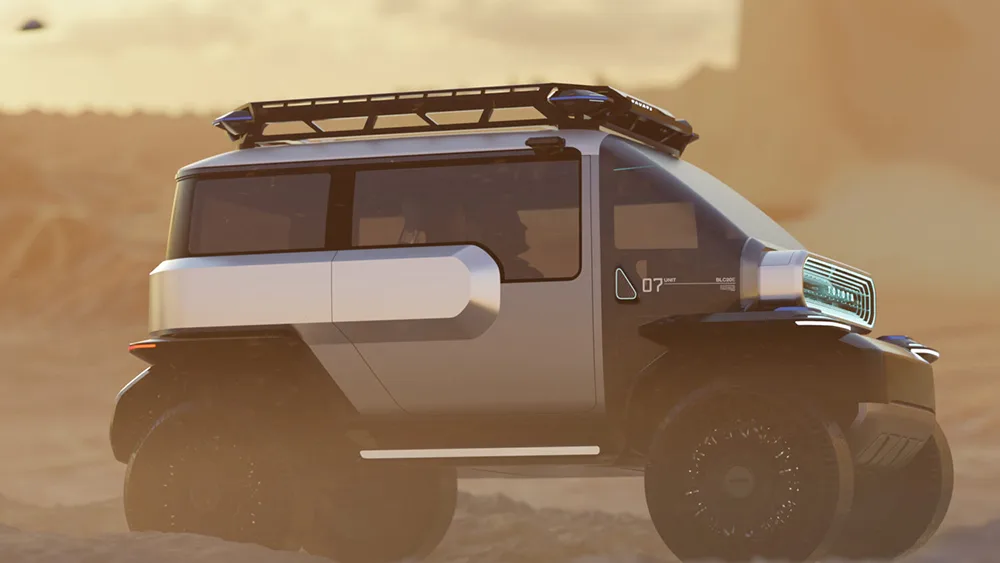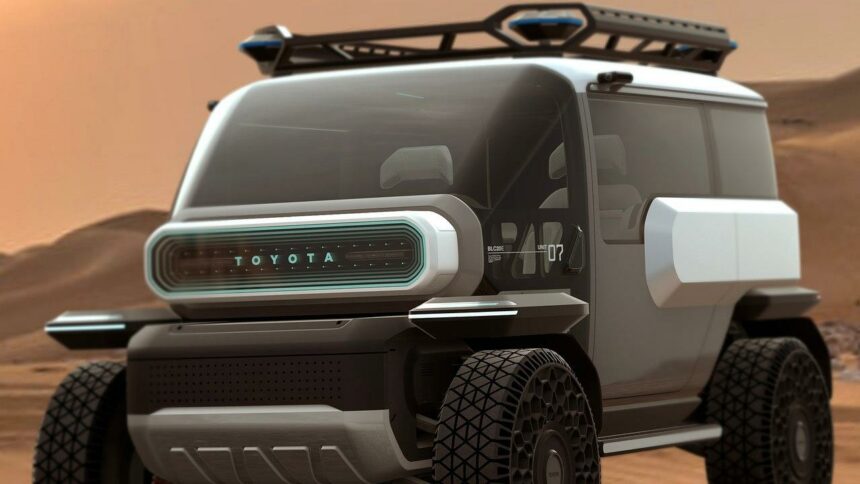It has been more than fifty years since the last human footsteps graced the lunar surface, but the dream of returning to the moon is becoming a reality. NASA is working diligently to achieve the monumental feat of sending the first woman and the first person of colour to Earth’s only natural satellite as part of its Artemis program.

The overarching goal of the Artemis program is to establish a moon base by the 2030s, marking a significant step toward a permanent human presence on the moon. However, for this lunar vision to come to fruition, astronauts need a reliable means of transportation. Enter Toyota’s exciting concept: the Baby Lunar Cruiser. While currently in the concept phase, this electric SUV offers a tantalizing glimpse into what lunar exploration could look like, and it represents a substantial upgrade from the iconic moon buggies of the 1970s.
Unlike the bare-bones buggies of yesteryear, Toyota’s lunar concept resembles a terrestrial car. But its capabilities are far from ordinary. One of the most striking features of the Baby Lunar Cruiser is its panoramic view. Equipped with a dashboard display powered by augmented reality and an array of cameras and sensors, this futuristic vehicle can detect rough terrain and potential crater-sized potholes on the moon’s surface. The vehicle boasts airless tires, a crucial design choice to prevent the unfortunate event of a puncture on the lunar landscape.

Adding to its allure, the Baby Lunar Cruiser proudly displays the Toyota emblem on both the grille and rear. With in-wheel electric motors, this concept vehicle promises a smooth and efficient lunar driving experience. Perhaps most intriguing is the mode of control—the Baby Lunar Cruiser will be manoeuvred using joysticks, bringing a touch of sci-fi flair to lunar exploration.
The inspiration for this concept design draws from Toyota’s original FJ40 Land Cruiser. While this concept is captivating in its own right, it is also a precursor to a real-world lunar rover currently under development through a partnership between Toyota and the Japanese Aerospace Exploration Agency (JAXA).

This six-wheeled, self-driving rover, aptly named the “Lunar Cruiser,” is slated to land on the moon in 2029 and is expected to travel an impressive 6,200 miles (10,000 km) across the lunar surface. It represents a leap forward in lunar exploration capabilities, paving the way for more ambitious and sustainable missions to Earth’s celestial neighbour.
As space agencies and private companies around the world set their sights on the moon, the Baby Lunar Cruiser, with its innovative design and capabilities, exemplifies the exciting future of lunar exploration. The dream of a permanent human presence on the moon is closer than ever, and Toyota’s vision of lunar mobility plays a vital role in turning that dream into reality.








